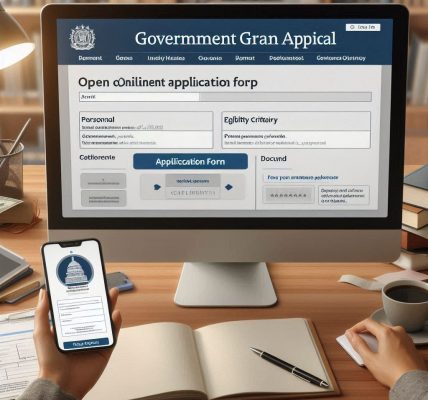Introduction:
Owning a home is a dream that many people strive for, but the financial barriers often make it challenging to turn this dream into reality. Fortunately, governments around the world, including India, offer various housing grants and subsidies to support low-income individuals and families in securing affordable housing. These financial aids, which come in the form of grants, subsidies, and loans, can significantly reduce the financial burden of homeownership and make it accessible to a wider population.
In this blog, we will guide you through the process of obtaining government housing grants, explain the different types of housing grants available, and provide tips on how to successfully apply for them.
What Are Government Housing Grants and Subsidies?
Government housing grants and subsidies are financial assistance programs designed to make housing more affordable for individuals and families. These grants typically cover part or all of the cost of purchasing a home, building a new one, or renovating an existing property. They aim to provide support to those who may not otherwise be able to afford a home due to financial constraints.
The assistance can come in the form of:
- Down Payment Assistance:
Grants or subsidies to help with the initial down payment when purchasing a home. - Subsidized Home Loans:
Financial institutions, in collaboration with the government, offer low-interest or zero-interest loans to eligible applicants. - Home Renovation Grants:
Financial assistance for improving or upgrading an existing home. - Affordable Housing Schemes:
Initiatives to provide government-subsidized housing units at discounted rates for low-income families.
Types of Government Housing Grants and Subsidies in India
The Government of India has introduced several schemes and programs to help citizens, particularly low-income families, get access to affordable housing. Below are some key programs you can explore:
1. Pradhan Mantri Awas Yojana (PMAY)
PMAY is one of the flagship housing schemes launched by the Indian government to make affordable housing accessible to the urban and rural population. The scheme provides financial aid to eligible beneficiaries to either buy, build, or renovate a home. The government offers interest subsidies on home loans under the Credit Linked Subsidy Scheme (CLSS).
Eligibility for PMAY:
- Families with an annual income of less than ₹18 lakhs.
- First-time home buyers.
- Priority is given to women, Scheduled Castes (SC), Scheduled Tribes (ST), and economically weaker sections (EWS).
2. Affordable Housing Fund (AHF)
The Affordable Housing Fund is a scheme designed to provide financial assistance to those living in urban areas and looking to purchase affordable housing. The fund provides subsidies and low-interest loans for affordable housing projects. The government also works with private developers to provide affordable housing options for low- and middle-income groups.
3. Housing for All Scheme
This initiative is designed to address the housing needs of the urban poor. It includes slum rehabilitation programs, provision of affordable housing, and interest subsidies for home loans. Under the scheme, the government provides financial assistance for the construction of new homes or the renovation of old ones.
4. State-Specific Housing Schemes
Apart from the central government’s schemes, various state governments have also launched housing subsidies to cater to local needs. For example, Maharashtra and Uttar Pradesh offer housing schemes targeting low-income residents. These schemes often include financial assistance for purchasing houses in government-approved townships and urban projects.
Eligibility for Housing Grants and Subsidies
To qualify for housing grants and subsidies, you need to meet specific eligibility criteria set by the government. While the eligibility requirements may vary from scheme to scheme, the general factors taken into account include:
- Income Level:
Most housing grants are aimed at people with low to moderate incomes. Eligibility is typically based on income groups such as EWS (Economically Weaker Section), LIG (Lower Income Group), and MIG (Middle Income Group). For example, PMAY offers subsidies based on annual household income. - First-Time Home Buyers:
Many housing schemes are targeted toward first-time homebuyers, especially those who have never owned a home. - Location:
Some schemes are specific to urban areas, while others are designed to assist rural populations in securing housing. - Age and Family Status:
Some programs may prioritize elderly individuals, women, and families with children. - Construction Stage:
Housing grants may be offered at different stages of construction, whether it’s purchasing a new home, building one, or making renovations to an existing house.
How to Apply for Government Housing Grants in India
Now that you understand the types of housing grants and subsidies available, let’s dive into the steps for applying for them.
1. Check Your Eligibility
Before applying, ensure that you meet the eligibility requirements for the grant you are interested in. Refer to the official websites of government programs like PMAY or Housing for All to check the specific criteria.
2. Gather Required Documents
The application process for housing grants requires you to submit several documents, including:
- Proof of identity (Aadhaar card, voter ID, passport).
- Proof of income (pay slips, bank statements, tax returns).
- Proof of address (ration card, utility bills).
- Property documents (for construction or renovation grants).
- Bank statements and loan approval documents (for home loans).
Make sure all your documents are up to date and meet the required standards.
3. Fill Out the Application Form
Most government housing schemes allow you to apply online. You can visit the official portal of the respective housing scheme (e.g., PMAY Portal) and fill out the application form. Be sure to provide accurate and complete information to avoid delays or rejection of your application.
4. Submit the Application
Once you’ve filled out the form and attached the necessary documents, submit your application online or through an authorized center. You may also need to provide a photograph, signature, and a verification affidavit.
5. Follow Up
After submitting your application, you will receive an acknowledgment. It’s crucial to follow up regularly to check the status of your application. In some cases, you may be required to attend an interview or site visit for verification.
Benefits of Government Housing Grants and Subsidies
- Affordable Homeownership:
Government housing grants make homeownership affordable for people from lower-income backgrounds. - Interest Subsidies:
Many programs offer subsidies on home loan interest rates, making it easier for applicants to repay loans without financial strain. - Social Security:
Housing grants provide social stability and security, especially for families in need of a permanent residence. - Increased Access to Better Living Conditions:
These grants improve the quality of life for low-income families by providing access to better living conditions in secure, well-developed areas.
Conclusion
Government housing grants and subsidies are a great way for low-income individuals and families to secure a home and improve their living conditions. By understanding the different available programs, ensuring you meet the eligibility criteria, and following the application process carefully, you can increase your chances of obtaining financial aid for affordable housing.
With initiatives like PMAY and various state-specific schemes, the Indian government is committed to addressing the housing shortage and making homeownership a reality for millions of citizens. If you are looking to buy a home or make improvements to your current living space, take advantage of these valuable financial aid options today.




